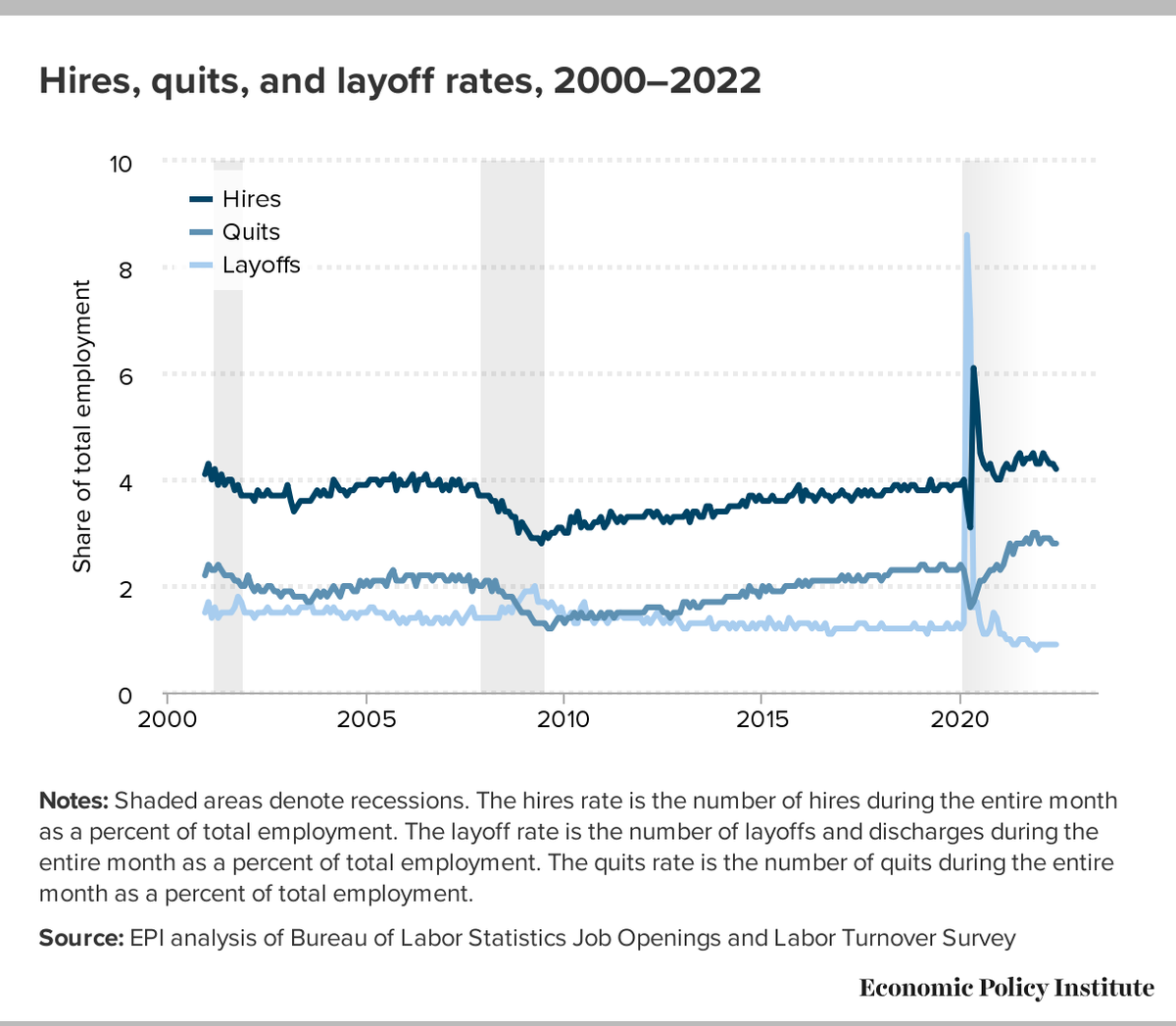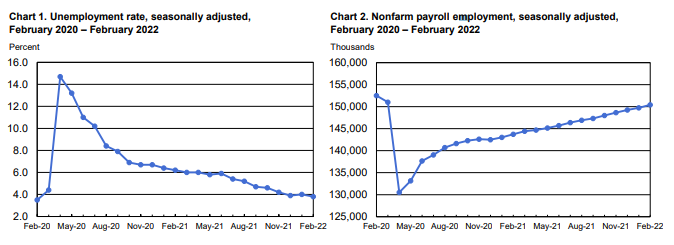
Jobs day tomorrow!!!
What am I hoping to see?
Some signs of life in stalled public sector employment!
epi.org/blog/what-to-w…
What am I hoping to see?
Some signs of life in stalled public sector employment!
epi.org/blog/what-to-w…
Over the last few months, we’ve seen signs of labor market cooling (albeit from a very strong base).
Some examples:
- the historic decline in job openings in August
Some examples:
- the historic decline in job openings in August
https://twitter.com/eliselgould/status/1577301711529676800
More signs of cooling:
- moderating wage growth
epi.org/blog/what-to-w…
- employment losses in interest-rate sensitive jobs

- moderating wage growth
epi.org/blog/what-to-w…
- employment losses in interest-rate sensitive jobs
https://twitter.com/eliselgould/status/1565754698413522944

Private-sector employment rebounded fantastically following the pandemic recession because Congress made fiscal investments at the scale of the problem, and employment in the private sector exceeded pre-pandemic levels by July 2022.
cnn.com/2022/03/03/per…
cnn.com/2022/03/03/per…
While the recovery continues to chug along, with rising labor force participation and prime-age employment-to-population ratio approaching pre-pandemic levels, the one sector that has failed to recover and has actually stalled for much of this year . . . 

. . . public sector employment.
Let's start with what happened in the private sector. There was a dramatic fall and a subsequent strong and swift rebound. This bounce back is especially notable in comparison to the prolonged, austerity-starved recovery from the Great Recession.
Let's start with what happened in the private sector. There was a dramatic fall and a subsequent strong and swift rebound. This bounce back is especially notable in comparison to the prolonged, austerity-starved recovery from the Great Recession.

Private-sector employment is now 0.7% above pre-pandemic levels, while public-sector employment at the state and local level remains 3.2% below its February 2020 level, though it experienced far fewer losses than the private sector in the early months of the pandemic. 

Public-sector employment also suffered in the aftermath of the Great Recession, but for many of the same reasons private-sector jobs faltered—the rise in austerity policies at all levels of govt choked off the recovery. State and local public employment didn't recover until 2018!
In both this and the last recovery, public-sector employment has faltered, but for very different reasons.
In the prior recovery, the public sector was ground-zero of the austerity that restricted the private sector recovery with the removal of fiscal relief and budget cuts.
In the prior recovery, the public sector was ground-zero of the austerity that restricted the private sector recovery with the removal of fiscal relief and budget cuts.
In the current recovery, federal fiscal relief under the American Rescue Plan has been extraordinarily strong, and state and local governments’ revenues have held up much better, yet public-sector employment still faltered. 

JOLTS data shows a very different pattern following the Great Recession vs the current recovery. Job openings plummeted and hires decreased in the aftermath of the GR: the public sector wasn’t interested in boosting employment. Quits also faltered due to lack of opportunities. 

A very different picture emerged this time:
Rising job openings signify increased demand, and though we saw hiring pick up in the last year, the hiring “yield” (hires/openings) fell quickly and employment barely budged. Further, quits have risen to historically high levels.
Rising job openings signify increased demand, and though we saw hiring pick up in the last year, the hiring “yield” (hires/openings) fell quickly and employment barely budged. Further, quits have risen to historically high levels.

Job openings in the public sector are up but workers aren’t accepting jobs at the going wages. Quits are at historically high rates: labor market exits or switches to the private sector.
Shortages beget shortages as workplaces are short staffed and workers experience burnout.
Shortages beget shortages as workplaces are short staffed and workers experience burnout.

In the private sector, shortages can be remedied relatively quickly through faster wage growth driven by market competition for workers—as happened in 2021 and earlier this year in rapidly expanding sectors like leisure and hospitality. 

Wages in the public sector are directly driven by policy decisions, not market forces. State and local governments have to affirmatively act—by making jobs more attractive—to alleviate shortages. And, workers can increase their leverage by forming a union.
epi.org/blog/the-publi…
epi.org/blog/the-publi…
Improved job quality in the public sector will translate into staffing for the vital services the public sector provides from health care to transit to public education. I hope to finally see some improvement in public-sector employment in the latest #jobsreport out tomorrow!
• • •
Missing some Tweet in this thread? You can try to
force a refresh



















